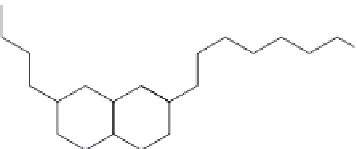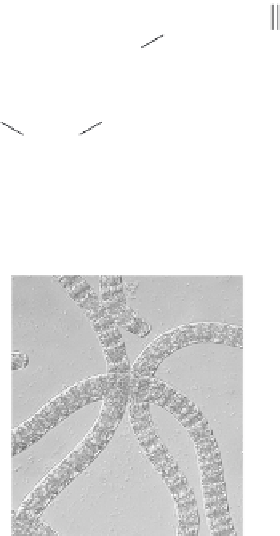Environmental Engineering Reference
In-Depth Information
proteins. The methanolic and hexanolic extracts of this plant have shown
antibacterial activities against
S. aureus
,
Staphylococcus epidermidis
,
B. subtilis
,
E. coli
,
and
Salmonella typhi
.
O
OH
pinolenic acid
SPIRULINA FUSIFORMIS
VORONIKHIN, 1934
Phylum: Cyanobacteria Class: Cyanophyceae
Order: Pseudanabaenales Family: Pseudanabaenaceae
Distribution: Tropical and subtropical countries
Habitat: Freshwater habitats
Description: This free-loating, multicellular, ilamentous species shows poly-
morphism; i.e., it changes its shape, color, and other characteristics accord-
ing to environmental changes.
Compounds and activities: The extracts of this species show anticancer activi-
ties as oral supplementation inhibits chemically induced carcinogenesis. Its
vitamin A content has shown chemopreventive activity in reversing oral
cancer (leukoplakia) (Singh et al., 2005). The c-phycocyanin (blue-colored
luorescent protein) pigment of this species is a potent proibrinolytic pro-
tein in the vascular endothelial system. This species has also been reported
to possess antiviral hepatoprotective, antioxidant, immunomodulatory,
analgesic, antipyretic, and ulcerogenic properties (Rasool et al., 2008). The
high content of K- and r-linolenic acid of this species has blood pressure-
lowering effects.


